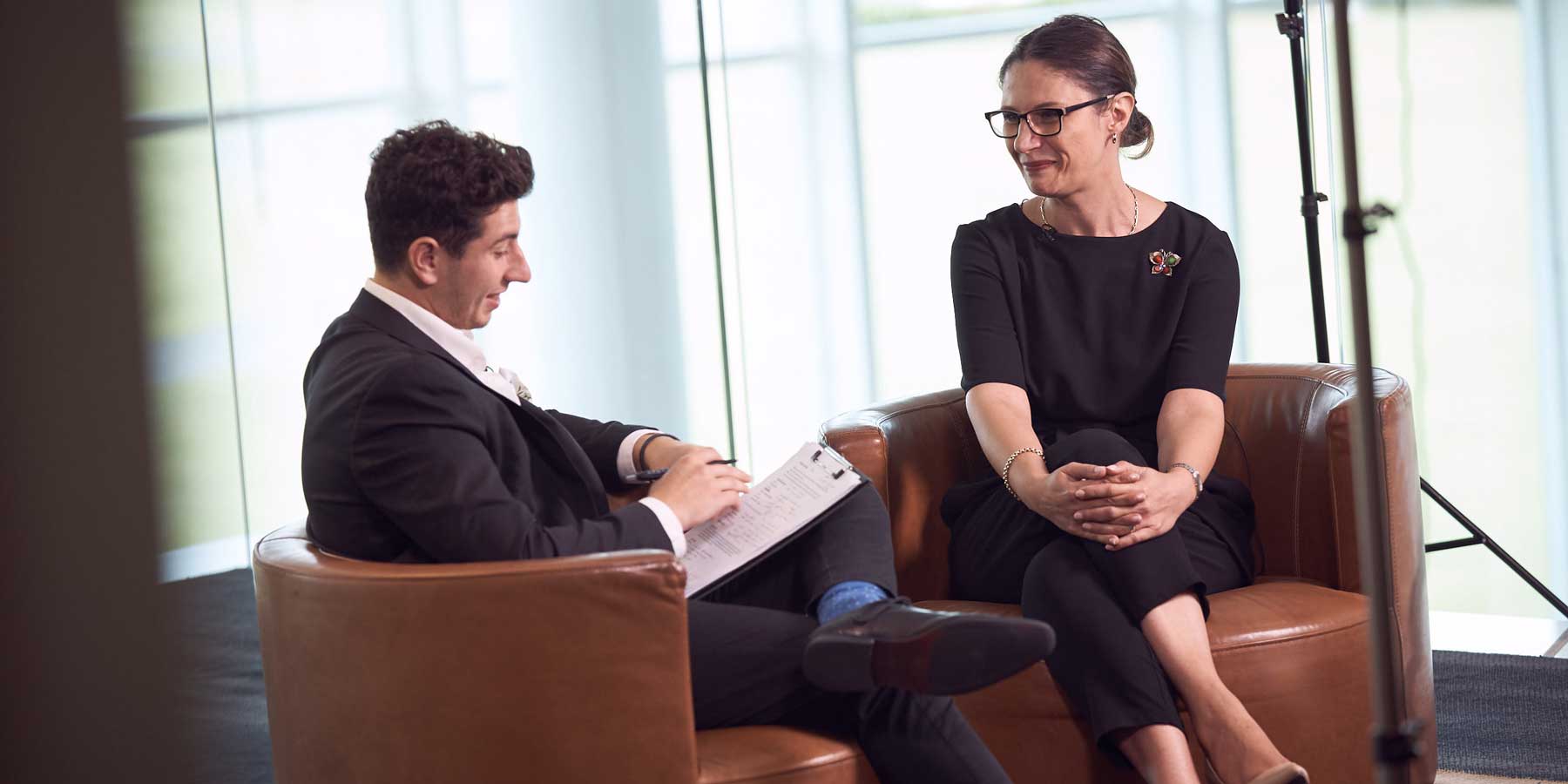As EY’s APAC Relationship Manager Cloud Enablement Lead, Gabriela Epuras sat down with ADAPT’s Senior Director of Advisory Services Anthony Saba at ADAPT’s Connected Cloud & Data Centre Edge to answer the age-old question of the digital era: To Cloud or Not to Cloud? To Epuras, it’s not just about cost saving, but unlocking opportunities to be agile. She gives her take on building strong IT teams, and the new kind of talent EY is looking for.
Anthony Saba:
Gabriela, thank you for being with us and thank you for joining us again for Connected Cloud & DC Edge. I have a number of questions for you. The first question I’m really keen to ask is one around the decision to move to the cloud. A lot of our delegates are already on the journey of moving toward cloud-first initiatives, but often they move for the wrong reasons. Many of them say cost reduction has been a huge driver for cloud-based initiatives.
Gabriela Epuras:
We’ve had multiple discussions around what should drive the decision over ‘Cloud or not to Cloud’. This is very interesting because one year ago, in a panel discussion on the subject at this event, that time, we were saying yes to the cloud. I’m coming back to that conclusion this year, except to say yes to cloud, but ‘cloud smart’. So, that will be my message for everybody here.
Why should anybody move to the cloud? Cost is definitely one of the reasons, but it should not be the primary one. Nobody was coming to the market and saying, “If you are going to the cloud, it’s heaven, and your cost will be 25% less.” Cloud can be expensive if you’re not being smart. But here is the beauty, it’s about the offering, Cloud is another offering on the market and the beauty of the cloud, and everybody’s talking about this really, I strongly believe in that it’s about agility. It’s about innovation, it’s a playground for the people to come and to explore their ideas.
Besides business innovation, besides agility, it’s about a business strategy. You need to take a look to say, okay, what do I want to do in the market? Do I want to be part of the business ecosystem? It’s not about who I am as a company, but what is my position in the ecosystem, what I want to do with others?
From this point of view, the cloud is a collaboration platform. Very soon we’ll hear discussions around open banking, which is a good example. Do you want to be part of a game? If so, you need to be a part of that.
This is about the business strategy first of all. It’s not an IT-driven decision in my opinion. IT is supporting the business strategy. Many times when we are having discussions with our clients, the CFOs, they are also part of that discussion, and of course, they are looking to the cost. Again, if you are talking about the cost, it’s not one application. If one application is making sense to stay on-premise or to move to the Cloud, it’s about the momentum.
Anthony Saba:
Absolutely, there’s an element of flexibility and agility that you mentioned, with moving to cloud computing. You also made reference to IT teams supporting and moving closer to these business decisions. In your role in EY, you’ve seen this convergence of the technology function and the business function. Can you talk about that change over the past five or so years? And also what it means for EY moving forward, having those teams aligned and supporting each other.
Gabriela Epuras:
EY started a transformation one year ago. We are no longer called IT services, we are EY Technology. Other service lines, on the business side, are also called EY Technology. I think it’s mandatory in order to be a strong player on the market, to stop making this differentiation between internal IT and the business.
So for us, in the last year, we are integrated, we are working together as one team for on our go to market, as well as internally. I think this is very important because you have the talent, you are extending to find the right people and to have them in the right place.
We have an enormous talent globally in EY globally, you know. On the business side and on the IT services side as well. This move allows us to identify those people.
Anthony Saba:
Talent is such a crucial challenge for everybody. As you said, it’s about having the right people in the right place to serve the right jobs. Now, EY has the flexibility of this global outreach, you’ve got amazing people across the business that you can pull across. But for organisations that need to be able to find the right people, what would your advice be? How do you identify the right talent within the business and move people who might have the skills into new roles that haven’t been identified yet? Is there any advice you would give other organisations?
Gabriela Epuras:
You need to empower your people as an employer. You need to respect your people and to take care of your talent. From the employee point of view, you need to take your career in your hands. You are not there to just wait for the task to be assigned to you. If you feel you are not in the right job, don’t stay there just because it’s paying your salary. Innovation means also what is good for me, what do I like to do, if you are getting paid for work you like to do, it’s like being on a permanent holiday.
Anthony Saba:
The next question I have is, cloud software products, SaaS products have changed how technology teams look internally. We’ve seen the loss of the specialist technologist in the business, and the rise of the generalist who can do many things and who can be flexible and jump on various projects, and help everybody out.
How has this shift of kind from specialist to generalist changed the skills you’re looking for in IT professionals now? What are the changes? Are you looking for people who communicate? Are you looking for people with type A personalities? What exactly does that look like for you?
Gabriela Epuras:
We have talked for a long time about the digital transformation. We believe digital transformation is not about coding, it’s not about megabits. It’s nothing to do with that. It’s not about the network either. Digital transformation for us means collaboration and communication. What we look for is people with an open mind, curious to learn because the technology is changing so quickly. So if you want to stay up to date you need to have a passion, you need to be curious to learn new things.
We have this luxury to choose what is the best for our business, and for our people as well because the moment a decision is made to go for a SaaS model, that is allowing our people to focus on other things.
It’s about the discussions and decisions in each company to say, okay, I want to build this solution in house, or I will go to the market to see what is there. So it’s giving the opportunity to the people to grow up in other areas, not only in software development.
 WATCH
10:21
WATCH
10:21






























